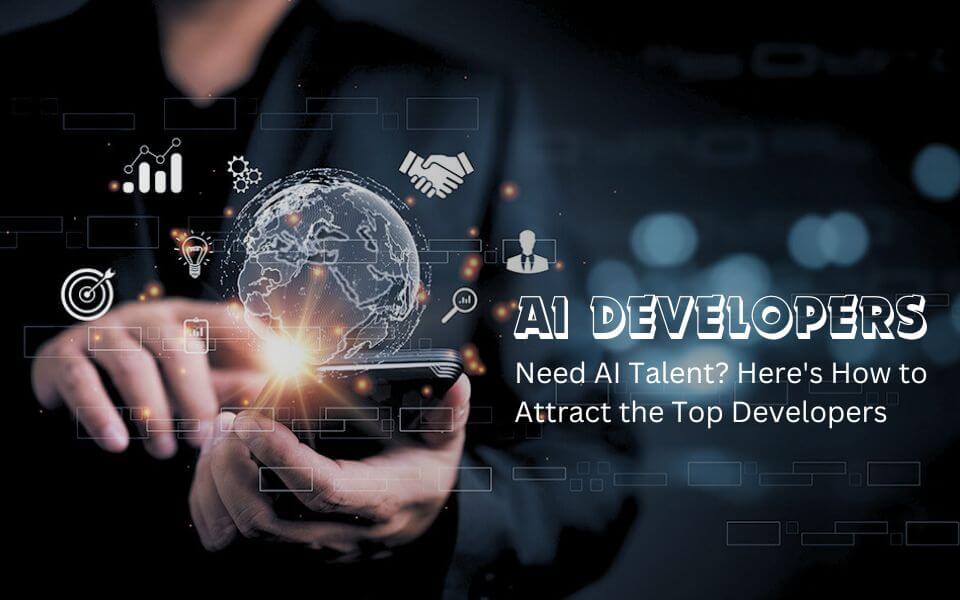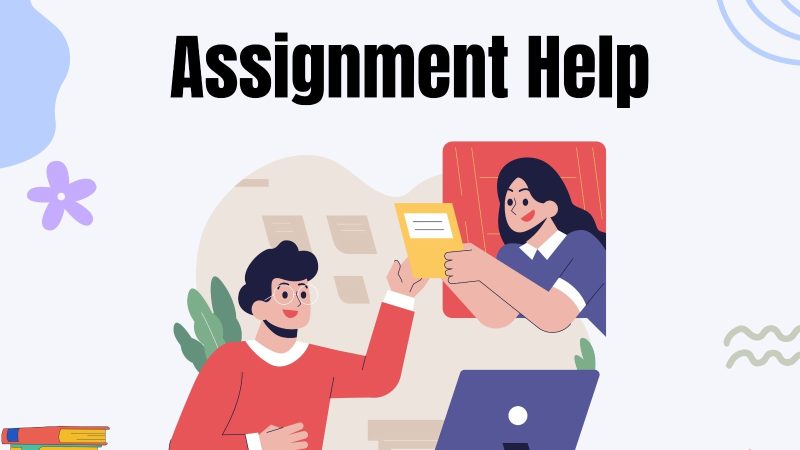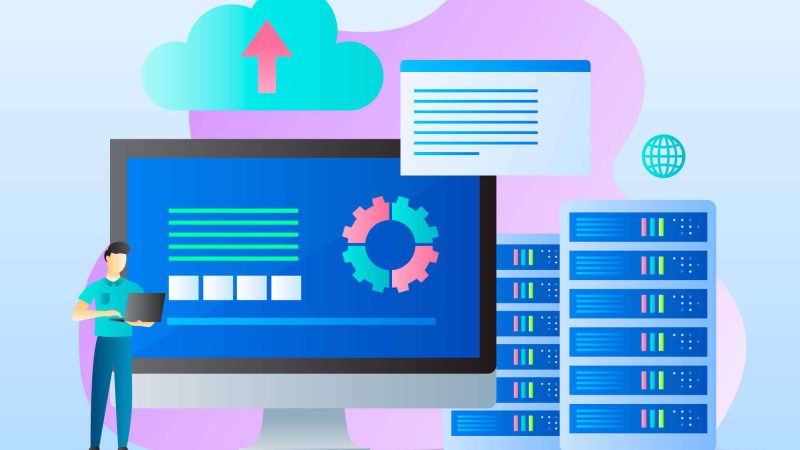Need AI Talent? Here’s How to Attract the Top Developers

The race is on to build AI capabilities and gain a competitive advantage. However, securing the specialized skills needed can feel daunting with tech giants paying top dollar.
For any organization pursuing ambitious AI projects, attracting exceptional talent to hire AI developers is essential.
Let us explore proven strategies to recruit all-star talent even amid intense competition.
Understanding the AI Talent Shortage
Surging corporate demand for AI capabilities has created a severe skills shortage. Key factors behind it include:
- Rapid growth – Investment in AI is accelerating exponentially, expanding job openings faster than talent pipelines can keep pace.
- Scarcity of experts – Only a tiny fraction of developers possess the PhD-level research chops required for advanced algorithm work. Supplies lag.
- Geographic concentration – Most AI jobs cluster in tech hubs like Silicon Valley where giants hoover up talent. Less central locations struggle.
- Education limitations – Universities are only now ramping up specialized programs in machine learning. Student availability lags.
- Competition from tech giants – Well-funded giants pay premiums and have huge brand advantages attracting top engineers.
This perfect storm makes AI recruiting feel like a zero-sum game. But creative approaches can still help land hidden gems.
Crafting an Attractive AI Employer Brand
To compete, first assess and enhance your employer brand from an AI seeker’s perspective:
- Highlight AI opportunities – Showcase groundbreaking initiatives underway and planned. Engineers want moonshot projects.
- Stress career growth – Beyond compensation, emphasize mentoring, training, education benefits, and clear advancement pathways.
- Differentiate your culture – Convey the excitement of innovation along with camaraderie and work-life balance. Align to their values.
- Play up access to data & infrastructure – Engineers want to work with abundant data and advanced systems. Sell your assets.
- Relevant research connections – For PhDs emphasize links to cutting-edge university labs providing intellectual nourishment.
- Promote social impact – Idealists are inspired by AI projects advancing humanitarian causes or the public good.
Convey that your mission and environment enable fulfilling AI work that is unable to be done elsewhere.
Searching for Overlooked Talent Pools
Rather than fighting recruiters from Facebook and Google for Stanford PhDs, discover untapped talent sources:
- Bootcamp graduates – Short technical programs produce junior developers eager to prove themselves. Mentor them into experts.
- Domain experts – Scientists or analysts with PhD research skills can transition into machine learning with some retraining.
- Adjacent specialists – Talented computer vision or robotics engineers can adapt. Technical aptitude transfers.
- Disillusioned Big Tech engineers – Veteran experts may seek purpose-driven work after ethical concerns at large firms.
- International talent – Expand visa sponsorships to access abundant math and physics grads abroad.
- Underemployed brilliance – Look beyond credentials to find raw aptitude unappreciated elsewhere, like parents returning to work.
Want to enhance your squad with top-tier talent? It’s time to focus on tactics to hire AI developers who can propel your initiatives forward.
Optimizing the Interview Process
Flawed interview practices can derail the recruiting of specialized AI roles. Rethink processes to impress candidates:
- Focus on problem-solving – Assess adaptability and critical thinking on technical challenges, not just memorized algorithms.
- Emphasize soft skills – Communication and collaboration matter in cross-functional AI work. Gauge emotional intelligence.
- Discuss ethics – Explore real-world dilemmas to assess reasoning on issues like privacy and bias. Reveal true character.
- Spot passion – Notice which problems spark curiosity and intrinsic motivation. Passion is indicative of persistence through frustrations.
- Customize assessments – Tailor technical screens and assignments to desired specialities like computer vision or NLP.
- Convey collaboration – Demonstrate mentoring support new hires can expect. Debunk sink-or-swim anxieties.
Make candidates feel your AI team values their skills and will help them thrive and grow.
Being Authentic About Challenges
AI development inevitably encounters frustrations like noisy data, misleading models, or recalcitrant end users. Address hurdles upfront:
- Show incremental progress – Convey that constant small improvements via iteration are celebrated, not just occasional flashy breakthroughs.
- Discuss debugging – Share stories of resilience in the face of setbacks. Communicate your culture of persistence.
- Preview pitfalls – It is better to set realistic expectations than to have engineers feel embarrassed by simple mistakes or common difficulties.
- Outline mitigation strategies – Demonstrate thoughtfulness around addressing pain points proactively through training, tools, and teamwork.
- Reframe obstacles – Characterize frustrations colleagues face as intellectually stimulating challenges to solve together, not personal failures.
With authenticity about the learning journey, engineers gain the confidence they will be supported in tackling novel problems.
Building an Inclusive and Diverse AI Team

Diversity and inclusion are vital for preventing bias and groupthink that undermine AI system performance. Some best practices include:
- Setting diversity hiring goals at all levels and ensuring balanced candidate slates and interviewer panels. Bring in voices from different backgrounds.
- Training hiring teams on avoiding subtle biases in interview assessments and evaluating candidates holistically. Judge aptitude, not pedigree.
- Mentoring programs specifically for employees from underrepresented groups in tech to guide them in navigating career growth. Lift future leaders.
- Employee resource groups empower communities like women in AI to connect, share experiences, and advise on initiatives. Gain critical perspectives.
- Checking AI models for demographic disparities during development and remaining vigilant for unintended discrimination in deployment. Responsible testing prevents exclusion.
- Celebrating multi-cultural holidays and events. Use inclusion to educate the organization about diverse communities and their value.
- Anonymous employee surveys tracking the experiences of underrepresented groups. Listen and strengthen areas of dissatisfaction that surfaced.
An AI team reflective of our broader society will build more ethical and effective systems benefiting all people.
When looking to hire AI developers, emphasize the intriguing projects they’ll be working on and the influence their work will have on the company’s success.
Offering Flexibility in How Work Gets Done
Allowing customization of where, when and how work happens attracts wider talent pools:
- Supporting both fully remote and hybrid onsite/remote arrangements based on employee needs. Location flexibility expands candidate options.
- Asynchronous communication and documentation practices that enable deep focus work anywhere. Results matter over physical presence.
- Flexible schedules adjusted around school, family or other outside commitments. Output expectations rather than fixed hours.
- Part-time roles, job sharing, and project-based gigs are open to those unable to commit full-time. Custom arrangements keep great talent.
- Time offs, extended leave and career break policies bring valued employees back into the workforce after life events.
- Accessibility audits ensure workspaces, devices, software and communication tools optimise inclusion. Enable all abilities to contribute.
- Customization around life circumstances empowers people to do their best work while still pursuing other passions.
Fostering Internal Mobility
Enable employees to move across projects and teams based on interests and strengths:
- Cross-training and shadowing that provides visibility into different focus areas, whether cloud infrastructure, robotics, genomics, etc. Discover new passions.
- Internal transfers and role rotations allow shifting into more fitting responsibilities or trying something new. Match talent to tasks dynamically.
- Stretch assignments on special projects that let people showcase different skills. A research scientist might help optimize a manufacturing process.
- Dual-ladder career paths separating technical IC and management tracks. Advance into greater impact without forced people management.
- A talent marketplace for teams to post needs and employees to pitch their expertise. Matches skills supply and demand transparently.
- Sponsoring side projects proposing innovative new ideas. Bottom-up innovation keeps talent engaged.
- Enabling easy movement between challenges prevents skill stagnation and lights new motivational sparks.
Making Learning a Daily Experience
Top-notch mentorship, education, and growth opportunities elevate an employer brand:
- Generous budgets for attending premier conferences, workshops, and courses to stay sharp on the latest advances. Continual learning is key.
- Access to research papers, books, video series and other educational materials to level up during work hours. Provide resources for self-driven learning.
- Learn from internal senior engineers or external luminaries sharing their perspectives and projects. Exposure to state-of-the-art work inspires.
- Hackathons and innovation challenges to solve real problems while expanding capabilities. Learning through accomplishing goals bonds teams.
- Manager training on nurturing growth through impactful feedback, coaching, and collaborative problem-solving. Develop talent don’t just manage it.
- Job shadowing, stretched assignments, and rotation programs to gain new skills. Apply classroom learning in real-world contexts.
- Make every work week a chance to expand your expertise. The pace of innovation demands lifelong students.
Championing Work with Purpose
AI experts want their skills applied to meaningful goals:
- Communicate how projects improve lives, strengthen communities, boost sustainability, increase access, or otherwise benefit society. Link work to enduring positive impact.
- Sponsor volunteer initiatives where employees can donate AI expertise to help nonprofits and humanitarian causes. Allow giving back.
- Be transparent about ethical principles guiding technology development and use. Convey responsibility congruent with engineer values.
- Include team members in corporate philanthropy decisions. Empower them to guide giving to causes they care about.
- Share inspiring user stories demonstrating how AI products make a real difference for clients or customers. Put faces to technical work.
- Support open-sourcing internal tools and libraries to advance public research. Increase reach and augment skills.
- Purpose-driven technology elevates the human experience. That mission attracts top talent eager to make a difference.
- Holistically optimizing team inclusiveness, flexibility, mobility, learning, and impact enables assembling an all-star ensemble even amid fierce AI talent competition.
With compelling work and welcoming colleagues, remarkable individuals will join the journey.
Also Read: How AI Aims to Help People, Not Just Make Money
Supporting Wellness and Work-Life Balance
Attracting and retaining top talent requires acknowledging employees:
- Flexible work hours and location options allow balancing caregiving, hobbies, and other priorities alongside work. Output expectations over presence.
- Generous vacation allowances encourage fully recharging and avoiding burnout. Make taking time off the norm, not a surprise.
- Mental health benefits like counselling, meditation apps, or support groups alleviate the stigma around addressing psychological needs.
- Stipends for continuing education, professional development conferences, or relevant learning materials support personal growth.
- Gym subsidies, activity challenges, and other health incentives reinforce physical well-being’s impact on cognitive performance.
- Boundary-setting training helps managers respect evenings, weekends and time off. Model sustainable behaviours.
- Anonymous surveys surface excessive overtime or other cultural issues undermining balance. Take action on feedback.
- Helping employees harmonize work and life responsibilities boosts satisfaction while preventing fatigue.
Investing in Manager Training
Great engineers want supportive leaders invested in their success:
- Communication skills to deliver constructive feedback tactfully, coach emerging talent, and mediate conflicts before they escalate.
- Technical training to appreciate challenges engineers face and unblock obstacles. Managers should understand work not just assign it.
- Inclusion education to recognize subtle biases and equitably empower diverse teams. Create welcoming environments.
- Project leadership programs to sharpen cross-functional collaboration and priority setting. Orchestrate, don’t just supervise.
- Decision-making frameworks to balance data-driven rigour with speed and agility demands. Empower risk-taking.
- Workload management training to ensure sustainable responsibilities and monitor for burnout warning signs.
- Tools for nurturing growth through mentoring, new assignments, special projects and other development opportunities.
- Exceptional people leaders attract and inspire exceptional team members. Investing in manager excellence pays dividends.
Competing on More Than Compensation
While competitive pay is essential, leading with salary alone is insufficient for engaging top AI toolsexperts eager to grow:
- Emphasize mentorship – Communicate opportunities to learn from seasoned internal and external AI experts. The rising tide lifts all.
- Highlight training investments – Discuss education stipends, reimbursed certifications, and conference travel and program partnerships augmenting learning.
- Sell growth trajectory – Lay out accelerated promotion cycles for high performers. Convey your organization as a rocket, not just a bank account.
- Encourage flexible work – Engineer-centric teams often embrace informal virtual or hybrid arrangements. Support results over appearance.
- Offer leadership opportunities – Platforms to manage projects or mentor junior engineers provide valuable experience.
Compelling mentorship, growth, and purpose attract AI experts seeking to stretch their wings.
While the AI talent shortage will not go away overnight, reconsidering sourcing pipelines, interview techniques, team settings, and career development possibilities enables any firm to compete for emerging rockstars.
With compelling projects and a nurturing culture, hidden gems can be uncovered even in hypercompetitive times. What creative sourcing avenues or candidate experiences have you found most effective for engaging AI experts amid today’s talent race? We welcome your insights on how we can attract and empower technical brilliance.






